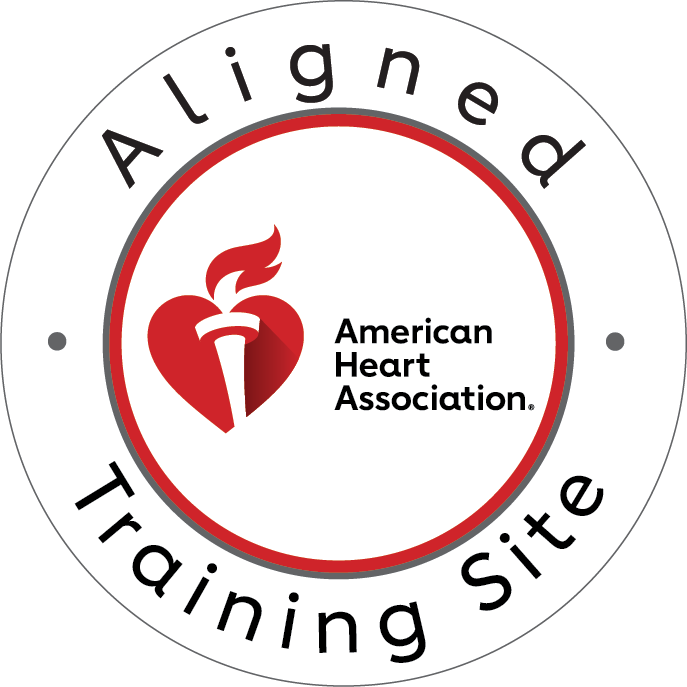In today’s fast-paced healthcare environment, workplace safety and preparedness are paramount. Medical professionals face the constant risk of encountering a wide range of medical emergencies, from cardiac events to traumatic injuries. Having staff trained in effective first response can mean the difference between a positive patient outcome and a devastating tragedy.
That’s where American Heart Association (AHA) Heartsaver training comes in. Heartsaver courses equip healthcare workers with the essential skills to recognize and respond to common medical crises. By incorporating this vital training into overall workplace safety protocols, organizations can elevate their level of preparedness and better protect both patients and employees.
The Need for Comprehensive Safety Protocols
Medical emergencies can strike at any moment in a healthcare setting – from the emergency room to the administrative office. Sudden cardiac arrest, severe bleeding, choking, and other life-threatening situations require immediate, well-coordinated action. Without a workforce trained in proven first aid techniques, the consequences can be dire.
The Need for Comprehensive Safety Protocols
Beyond these medical crises, healthcare workplaces face a wide array of other emergencies that require swift, knowledgeable responses – from seizures and strokes to severe allergic reactions. Comprehensive safety protocols must account for the full spectrum of potential medical emergencies that could occur. Integrating Heartsaver training is a proven strategy for equipping staff to handle these high-stakes situations.
Every healthcare facility, from hospitals to outpatient clinics, must be prepared to address a diverse range of medical emergencies. A patient may suddenly experience a diabetic emergency, requiring prompt glucose monitoring and administration of treatment. An employee or visitor could suffer a severe allergic reaction, necessitating the rapid use of epinephrine and other interventions. Even common accidents, like slips and falls, can result in serious injuries that demand immediate first aid.
Incorporating Heartsaver Training into Safety Best Practices
To optimize workplace preparedness, healthcare organizations must make Heartsaver training a core component of their overall safety protocols. This involves identifying the key roles and responsibilities for Heartsaver-certified staff and seamlessly integrating this training into new employee onboarding as well as ongoing professional development.
At a minimum, organizations should mandate that all direct patient care providers, from nurses to medical assistants, obtain and maintain current Heartsaver certifications. This ensures a baseline level of first aid competency across the frontlines of patient interaction. However, the benefits of this training extend far beyond clinicians.
Facilities should also strategically place Heartsaver-trained staff in crucial support positions, such as security, facilities management, and even administrative roles. This creates a multilayered safety net, with trained responders dispersed throughout the workplace to provide rapid emergency care. Furthermore, periodic refresher courses and skills assessments should be required to keep Heartsaver’s knowledge and techniques sharp.
By weaving Heartsaver training into the fabric of workplace safety, healthcare organizations demonstrate a steadfast commitment to protecting their most valuable asset – their people. This proactive approach not only enhances emergency response capabilities but also fosters a culture of preparedness that resonates throughout the entire organization.
Optimizing Emergency Response with Heartsaver Skills
When a medical crisis strikes in the workplace, seconds count. Having staff trained in proven Heartsaver techniques can mean the difference between a positive patient outcome and a devastating tragedy. These lifesaving skills empower responders to act quickly and effectively, mitigating the risks associated with such high-stress situations.
Heartsaver-certified employees are equipped to rapidly assess the situation, provide appropriate first aid, and activate emergency medical services if necessary. From administering CPR and using an AED to controlling severe bleeding, these trained personnel can initiate critical interventions without delay. This not only increases the chances of survival but also reduces the risk of further injury or long-term complications.
Fostering a Culture of Workplace Preparedness
Integrating Heartsaver training into safety best practices is not just a matter of checking a box – it requires a concerted effort to foster a culture of workplace preparedness. This starts with gaining buy-in and support from organizational leadership, who must champion the importance of this training and allocate the necessary resources.
Healthcare leaders should communicate the rationale and benefits of Heartsaver certification to all staff. Emphasizing the life-saving potential of these skills, as well as the legal and ethical obligations to provide a safe environment, can help secure buy-in from employees at all levels. Reinforcing the training’s relevance to each individual’s role, whether clinical or non-clinical, further strengthens the case for universal participation.
Conclusion
The importance of workplace preparedness cannot be overstated, especially in the high-stakes environment of healthcare. Medical emergencies can strike at any moment, and having staff trained in effective first response is essential for mitigating risk and saving lives. By integrating Heartsaver training into safety best practices, healthcare organizations can elevate their level of readiness and create a more resilient workplace.
Heartsaver courses equip personnel with the knowledge and skills to rapidly identify, assess, and respond to a wide range of medical crises. From administering CPR and using an AED to controlling severe bleeding, these trained individuals are prepared to take immediate, decisive action when seconds count. This not only increases the chances of positive patient outcomes but also reduces the risk of adverse events and legal liabilities.
Perhaps most importantly, incorporating Heartsaver training fosters a culture of workplace preparedness that resonates throughout the entire organization. By making this training a core component of employee onboarding, ongoing professional development, and emergency response protocols, healthcare facilities demonstrate an unwavering commitment to safety and wellness. This proactive approach empowers staff, enhances emergency response capabilities, and solidifies the organization’s reputation as a leader in healthcare excellence.
As the healthcare industry continues to evolve, the need for comprehensive workplace safety protocols has never been greater. By prioritizing Heartsaver training and embedding it into their safety best practices, forward-thinking organizations can position themselves to handle any medical emergency with confidence and competence. This commitment to preparedness not only saves lives but also strengthens the resilience of the entire healthcare ecosystem.
In the high-octane world of healthcare, there’s no room for uncertainty when it comes to workplace safety. That’s why savvy organizations are making Heartsaver training an integral part of their emergency preparedness protocols – and reaping the rewards.
Think about it – when someone’s life hangs in the balance, having staff who can spring into action with confidence and competence can mean the difference between a positive outcome and a devastating tragedy. And that’s precisely what Heartsaver-certified employees bring to the table. Trained in the latest techniques for administering CPR, controlling bleeding, and responding to a host of other medical emergencies, these heroes are ready to handle any crisis that comes their way.
But the benefits of this training extend far beyond the medical emergencies themselves. It also fosters a culture of preparedness that permeates every corner of the organization. When employees feel empowered with lifesaving skills, they approach their roles with a heightened sense of responsibility and vigilance. This mindset strengthens the entire healthcare team, creating a safer, more resilient environment for patients and staff alike.
So, what are you waiting for? Leap and elevate your workplace safety with the help of CPR Classes Tampa, an American Heart Association training site that offers comprehensive Heartsaver certification. Equip your staff with the skills to respond to any medical crisis with cool, calm, and collected professionalism. Trust us, your patients (and your bottom line) will thank you.
Contact CPR Classes Tampa today and discover how Heartsaver training can transform your organization’s approach to workplace preparedness.




